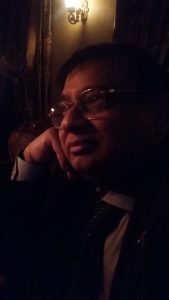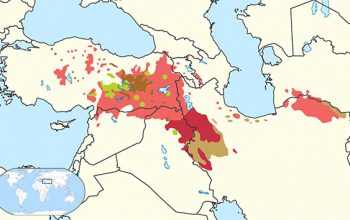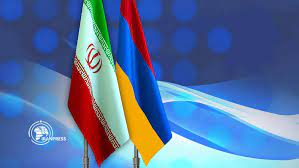
Santhi Jayasekera, PhD
Job of television director
While viewing a TV program or movie, the audience pays attention to the play of actors, shooting quality, but the fact, that a great job has been made by a director – is left behind the scenes. On his talent depend skills of a director-producer, the success of a TV performance, play and its artistic value as a work of art.
The initial function in the director’s work is primarily in understanding the material and its interpretation – “What about?”, “What for?”, “What to say to the viewer?”. It was he, who organizes the whole team, approves the scenery and style for film-making process, and also monitors the montage of the material.
The director must know the work of each member of the shooting process: cameraman, sound editor, actor or editor.
Directing a television movie.
The word “director” comes from French word of control. He is a manager, the main person, who creates a work screen. But this artwork is created by a group of people. All these people are creative, and everyone has his own idea of how it should look like, and only the director is the one, who determines the style and has a casting vote.
When preparing for the production of the film the director takes as the basis a literary script. When got the script, the director begins to look for and also use figurative and expressive means, which would strengthen the plasticity of images, materialized in the word, and, thus would not allow getting instead of instead of genuine on-screen realization of the idea of a literary script – a surface illustration.
This requires professional knowledge and experience, as well as the creative collaboration with a cameraman and editor. The unity of the requirements from the editor and director ensures success in the further work on the film.
Professional director, when got the literary script, can tell at once that they can do with it: on the basis of experience, of what he had seen already, on the grounds that the script has certain parameters and standards, and when these parameters are known, what kind of result can be – it is not difficult to provide.
Director’s script is like a staging plan of the literary script. This is director’s interpretation of it. On the screen life is performed in a large scale, focuses attention of the audience on the experience of the people, showing their characters in subtle hues, reproducing the real environment in which they operate.
Together with the editor and the author of the script director chooses the participants of the shooting, defines a situational line for better disclosure of the nature of the characters.
Only such a joint community will have a beneficial impact on the work on the film. The main document of the director and production team to prepare for the production of the film is the staging project.
On detailed study for future production, on quality of the project – the producer can judge the professionalism of the entire production group. Shooting a short 30-second video or a full-length film – anyway still the staging project is the main document by which you can understand what plans the director has, what he wants to convey to viewers in their work, and by what means this will be achieved.
Along with the script for the project in staging project the plans of mise en scenes and storyboards are a key part of the concept of the future work.
“Storyboards” in screen work are a sequence of all drawn frames of the future picture with the number, duration and methods of shooting. All drawn frames are strictly linked to the staging plans, with the locations of the shooting, with the ways of moving of actors and television cameras.
Each shooting point has its number, corresponding to the frame number in the storyboard and shooting script. Shooting period is the most expensive in the production of the film. On how this period thought and worked out depend not only time periods and money, but also the quality of the artistic design, the degree of reality of its realization, as well as artistic success.
Graphics language. Each director and cameraman must show each other graphically what they want to see in the frame, what size, from what point. They must be able to draw key elements of the frame composition.
Typically, the development of storyboards is done in two stages: The first stage – the director himself draws all the shots and mise en scenes, linking with the shooting script. The second stage – the defence of the stage project. The project shown to the customer or sponsor, getting money to produce the film.
Directing a live broadcast.
Live Now is primarily information programmes. Live Now – it’s a talk show, broadcast of a sporting event or a reality show record.
This is just a small list of works in live broadcast, requiring the director to have great concentration and emotion. The dynamics, a continuous process, the sequence of actions on the screen is the main component of live broadcast. Persistence and simultaneous of broadcast and time – makes the director always be on his toes and keep in constant readiness all participants of the shooting process.
Live broadcast includes not a single camera shot, but several. In this case, the director must manage the switchover of television cameras and make mounting frame meaningfully with a specific and clear connection. In this case, the technical installation merges with constructive. Unlike the technical installation of the design lies in the fact that in the first case frames are connected meaningfully. The purpose of constructive mounting is to make the motion on the screen correctly. In reportage programs the directorial work on the script itself is already in the live broadcast.
The property of live broadcast – simultaneity – fully leaves out for the director one of the main conditions of creativity – the ability to change anything during the shooting process. Material for mounting, tempo and rhythm issues are resolved immediately, along with the process of the broadcasting.
Television director works on his audience, on a specific audience, and this understanding makes a correction in its activities.
The profession of TV producer presupposes equally the both presence of talent and original vision and patience, immense capacity, the ability to be devoted to the labour of love.
The talented director can count on the worldwide popularity and satisfaction of his creative ambitions.
Television cameraman.
Cameraman is one of the most interesting jobs on television. He always works in a team and always close to the director. They discuss the plot together, together coordinate the plan.
But at certain moments cameraman needs precision and quickness, efficiency and ability to make independent decisions.
The work of a cameraman has its own specifics.
– Work in a television studio provides shooting television, popular scientific and documentary films.
In the television studio a multi-camera shooting is typical – simultaneously by several cameras that monitor the action from different points of the shooting area. The cameraman and director control the camera distantly. The multi-camera shooting allows you to shoot without a break long scenes, and that facilitates the work of the actors. It is convenient for shooting crowd scenes.
– Direct reporting from the scene. Colorful reports during folk festivals, celebrations, awards. Broadcast of matches from the stadium, as well as visits and reports from the crash place. The cameraman by means of technical solutions reproduces the mood, emotions, brings to the viewer the basic idea, the general atmosphere.
– Shooting TV programs. It includes participation in creation of television shows, political, scientific and educational programs, music and entertainment shows.
The cameraman must have certain skills: confidently master television and shooting equipment, master different types of shooting, have an idea of the photographic, know how to work with illuminating equipment.
The cameraman is responsible for the artistic and technical quality of the recording material.
Considerable attention should be paid by the cameraman to light. He must work in any environment with either good or a bad light.
The cameraman works with direct, reflected and diffused light, controls the lighter’s work for the exact location of shadows, and the degree of light components. To compensate for different lighting conditions special filters are used. The main indicator of a professional cameraman is confident work with television equipment, lighting, and his ability to quickly rebuild the exposure and focus distance, always pay attention to the prospect of a video frame by changing the position of the camera gently and only when necessary zoom the scale of the image, using zoom lens at the same time.
The cameraman has to have an ability to work with a camera on a tripod, and with hands, using a built-in microphone in emergency conditions.
The correct choice of the composition directly affects the way the perception of a shot scene.
And of course, a professional cameraman must know and use the screen means of expression: a frame, a plan, a view and montage.
Visible space in a display frame – a frame.
Scale of image in the frame – plan.
The angle, formed with the optical axis of the camera lens is perspective.
Placement in a specific order is called montage.
One of the most sophisticated means of screen expression is shooting in motion. In the arsenal of the cameraman must be several tricks of such shooting. Shooting with a camera, rotating around its vertical or horizontal axis, is called panning.
The next type of shooting in motion, when the angle between the optical axis of the lens and the object plane remains unchanged during the shooting, is called travelling.
Various combinations of travellings and panning is called a project shooting.
Using these shooting in motions techniques, the operator must be able to withstand the static at the beginning and end of each frame, to keep the nature of performance of a panorama, to feel plasticity of the episode.
With each particular episode the operator has to rotate the camera no more than one time, slowly increasing the speed of rotation.
In order to get more volume pictures teleoperatorskaya shooting of close-ups is used, which allows the viewer to see eyes and hands of the character, to understand his emotions better.
Image in live broadcast is the final result of the cast members’ activity: a script writer, a director, actors – which author is the cameraman, with his eyes the viewer sees everything that happens on the screen.
A good cameraman is always relevant in TV companies, TV studios, advertising and production organizations.
Film Editing.
Montage – is placement in a specific order.
Montage can be technical, constructive, artistic and parallel.
Technical montage is mainly used in the movie, when the pieces of film are glued.
When frames are assembled with a clear meaningful connection between them – a process is called constructive montage.
When frames are joined together, creating imaginative communication – it is artistic montage.
Bumping frames into one another, shot at different times and in different places, you can achieve simultaneity of two different actions – this is called parallel montage.
Montage director should be closer in spirit and television to director and editor. He must know the history of television, have an idea of new mounting solutions, know the theory of installation.
He should be able to work with computer equipment and know the latest software.
He has to mount not only TV programs, shown in the record, but also the programs that go in live broadcast, where there is no right for mistake.
A great impact from the director requires installation work on the production of daily news program in live broadcast with several image sources.
The work of the sound producer.
The viewer hears with the sound producer’s ears the voice of a TV presenter, concerts, TV plays and sound of the orchestra – so the profession of a sound director is also needed, as well as important.
A great professional impact requires work with huge mixer consoles, which allow managing dozens of microphones while recording and processing sound, using modern computer technologies. All of this sound director must perfectly master.
TV presenter – as the face of the programs.
Everybody knows presenters of information, children’s, sports and entertainment programs. This list of favorite for viewers presenters can be continued. Each of us has most favorite and least favorite presenter. We believe them and look forward to the next release of the television program, in which one of its characters is its presenter. A life of a presenter in live broadcast is short, but very bright. To find such a “bright star” – is the goal of numerous castings and views, where original and talented images are traced and carefully selected.
A Beautiful profession.
A make-up artist of programs is one of the most beautiful professions on television. His job is to make the participants of the program: for the audience – their people, and the broadcaster – their and beautiful.
Not all, who come to the TV for shooting easily allow make-up artist to do manipulations on their faces.
And if the presenter does not appear in the frame without make-up, then with some “important persons” they have to work on. But in any case, beauty wins. This beauty makes make-up artist.
Producer of TV programs.
Producer – is the organizer of the production of TV programs and TV series. He is also the director of the film crew. His work is organization of equipment and crew exit from the cost of writing the script, from the acquisition and the manufacturer sets up to lunch for the participants of shooting.
Therefore, a good producer and organizer of TV production, every channel or production center wants


